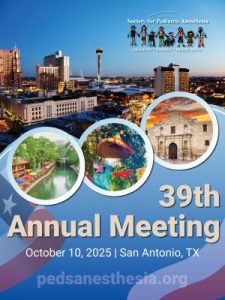{“questions”:{“6q6in”:{“id”:”6q6in”,”mediaType”:”image”,”answerType”:”text”,”imageCredit”:””,”image”:””,”imageId”:””,”video”:””,”imagePlaceholder”:””,”imagePlaceholderId”:””,”title”:”A 7-year-old, 25-kg boy with history of hypoplastic left heart syndrome who has been palliated with a Fontan procedure presents for laparoscopic appendectomy. Which of the following is the MOST appropriate ventilation strategy? “,”desc”:””,”hint”:””,”answers”:{“g9r18”:{“id”:”g9r18″,”image”:””,”imageId”:””,”title”:”A.\tVolume-controlled ventilation with VT 150 mL, RR 16, I:E 1:3, PEEP 5″,”isCorrect”:”1″},”a9mh9″:{“id”:”a9mh9″,”image”:””,”imageId”:””,”title”:”B.\tVolume-controlled ventilation with VT 250 mL, RR 22, I:E 1:2, PEEP 5″},”hbj8i”:{“id”:”hbj8i”,”image”:””,”imageId”:””,”title”:”C.\tPressure-controlled ventilation with peak inspiratory pressure 20 cm H2O, RR 22, I:E 1:2, PEEP 5 “},”cztsw”:{“id”:”cztsw”,”image”:””,”imageId”:””,”title”:”D.\tPressure-controlled ventilation with peak inspiratory pressure 10 cm H2O, RR 16, I:E 1:3, PEEP 10″}}}},”results”:{“dsa8j”:{“id”:”dsa8j”,”title”:””,”image”:””,”imageId”:””,”min”:”0″,”max”:”1″,”desc”:””,”redirect_url”:”https:\/\/pedsanesthesia.org\/wp-content\/uploads\/2024\/09\/Week-212-Fontan-Physiology.pdf”}}}
Question of the Week #211
{“questions”:{“yyjxb”:{“id”:”yyjxb”,”mediaType”:”image”,”answerType”:”text”,”imageCredit”:””,”image”:””,”imageId”:””,”video”:””,”imagePlaceholder”:””,”imagePlaceholderId”:””,”title”:”A 3-year-old male with a depressed skull fracture and large epidural hematoma with evidence of midline shift is scheduled for an emergent craniotomy. Administration of which of the following medications is MOST appropriate to reduce intracranial pressure?”,”desc”:””,”hint”:””,”answers”:{“c7sxo”:{“id”:”c7sxo”,”image”:””,”imageId”:””,”title”:”A. Ketamine”},”ds58f”:{“id”:”ds58f”,”image”:””,”imageId”:””,”title”:”B. Succinylcholine”},”81ury”:{“id”:”81ury”,”image”:””,”imageId”:””,”title”:”C. Nitrous oxide”},”q9cv2″:{“id”:”q9cv2″,”image”:””,”imageId”:””,”title”:”D. Hypertonic saline”,”isCorrect”:”1″}}}},”results”:{“icv1v”:{“id”:”icv1v”,”title”:””,”image”:””,”imageId”:””,”min”:”0″,”max”:”1″,”desc”:””,”redirect_url”:”https:\/\/pedsanesthesia.org\/wp-content\/uploads\/2024\/09\/Week-211-Increased-ICP.pdf”}}}
Question of the Week #210
{“questions”:{“z6614”:{“id”:”z6614″,”mediaType”:”image”,”answerType”:”text”,”imageCredit”:””,”image”:””,”imageId”:””,”video”:””,”imagePlaceholder”:””,”imagePlaceholderId”:””,”title”:”A 4-year-old child with mandibular hypoplasia and flattening of the cheekbone presents for tonsillectomy.Which of the following is MOST consistent with Treacher-Collins syndrome? “,”desc”:””,”hint”:””,”answers”:{“qcs0y”:{“id”:”qcs0y”,”image”:””,”imageId”:””,”title”:”A.\tThe larynx is hypoplastic, narrow, and diamond-shaped. “},”babkr”:{“id”:”babkr”,”image”:””,”imageId”:””,”title”:”B.\tAtlantoaxial instability and submucosal deposition of glycosaminoglycan in the airway. “},”gwl66”:{“id”:”gwl66″,”image”:””,”imageId”:””,”title”:”C.\tDirect laryngoscopy and tracheal intubation become more difficult with age.”,”isCorrect”:”1″},”7hbiz”:{“id”:”7hbiz”,”image”:””,”imageId”:””,”title”:”D.\tAsymmetric anomalies of the ears, eyes, and vertebral bodies are typical.”}}}},”results”:{“sglai”:{“id”:”sglai”,”title”:””,”image”:””,”imageId”:””,”min”:”0″,”max”:”1″,”desc”:””,”redirect_url”:”https:\/\/pedsanesthesia.org\/wp-content\/uploads\/2024\/09\/Week-210-Treacher-Collins.pdf”}}}
Question of the Week #209
{“questions”:{“vfgmm”:{“id”:”vfgmm”,”mediaType”:”image”,”answerType”:”text”,”imageCredit”:””,”image”:””,”imageId”:””,”video”:””,”imagePlaceholder”:””,”imagePlaceholderId”:””,”title”:”A 5-year-old 20 kg girl presents to the emergency department following burns to her anterior trunk. According to the Parkland Formula, what volume of crystalloid should be infused over the next 8 hours in addition to maintenance fluids? “,”desc”:””,”hint”:””,”answers”:{“xkfku”:{“id”:”xkfku”,”image”:””,”imageId”:””,”title”:”A.\t390 mL”},”nr730″:{“id”:”nr730″,”image”:””,”imageId”:””,”title”:”B.\t520 mL”,”isCorrect”:”1″},”5arfp”:{“id”:”5arfp”,”image”:””,”imageId”:””,”title”:”C.\t650 mL”},”l2w62″:{“id”:”l2w62″,”image”:””,”imageId”:””,”title”:”D.\t1040 mL”}}}},”results”:{“32lgr”:{“id”:”32lgr”,”title”:””,”image”:””,”imageId”:””,”min”:”0″,”max”:”1″,”desc”:””,”redirect_url”:”https:\/\/pedsanesthesia.org\/wp-content\/uploads\/2024\/09\/QoW91-Burn-Management-REVISED-2.pdf”}}}
Question of the Week #208
{“questions”:{“0z82j”:{“id”:”0z82j”,”mediaType”:”image”,”answerType”:”text”,”imageCredit”:””,”image”:””,”imageId”:””,”video”:””,”imagePlaceholder”:””,”imagePlaceholderId”:””,”title”:”A 14-year-old male develops neck hyperextension, eye deviation, forced jaw opening, and tongue protrusion in the PACU following an open reduction and internal fixation of his elbow. His past medical history includes schizophrenia, for which he takes risperidone. Administration of which of the following medications is the MOST appropriate initial treatment for this patient?”,”desc”:””,”hint”:””,”answers”:{“di00j”:{“id”:”di00j”,”image”:””,”imageId”:””,”title”:”A.\tHaloperidol”},”vyvwx”:{“id”:”vyvwx”,”image”:””,”imageId”:””,”title”:”B.\tMidazolam”},”l27hj”:{“id”:”l27hj”,”image”:””,”imageId”:””,”title”:”C.\tDiphenhydramine”,”isCorrect”:”1″},”4hriu”:{“id”:”4hriu”,”image”:””,”imageId”:””,”title”:”D.\tLevetiracetam”}}}},”results”:{“cf38y”:{“id”:”cf38y”,”title”:””,”image”:””,”imageId”:””,”min”:”0″,”max”:”1″,”desc”:””,”redirect_url”:”https:\/\/pedsanesthesia.org\/wp-content\/uploads\/2024\/08\/Week-208-Risperidone.docx.pdf”}}}
- « Previous Page
- 1
- …
- 10
- 11
- 12
- 13
- 14
- …
- 46
- Next Page »
